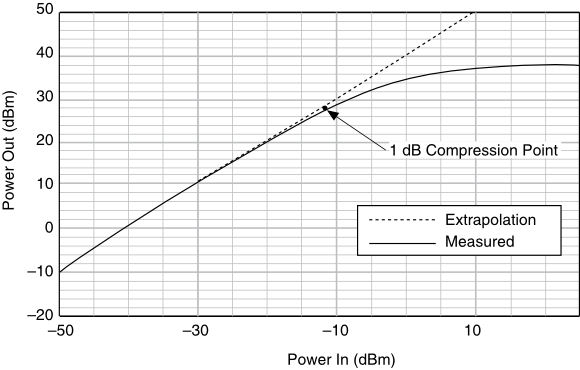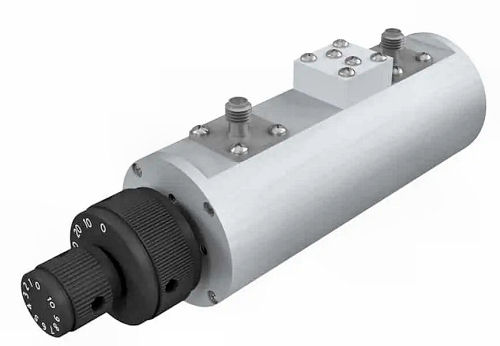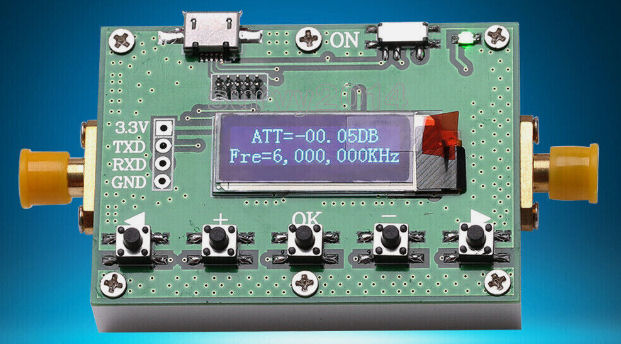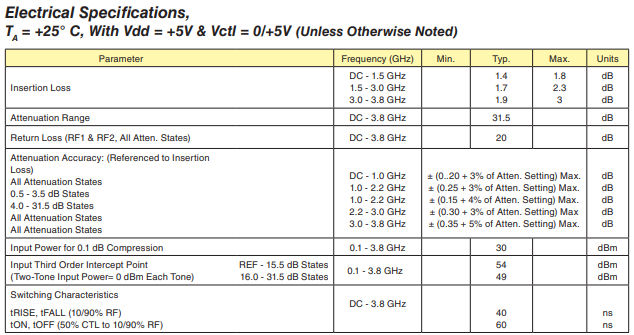Linearity and Measuring Sun Noise
The basic requirement for measuring sun noise is that you measure some signal which is linearly proportional to the RF energy captured by the antenna. What you measure doesn't matter. It can be the audio output power of a receiver in the standard audio bandwidth (typically something like 2.5kHz e.g. from 400Hz to 3000Hz). It can be the "audio" power in the output from a wideband SDR like a FunCube Pro+ (a bandwidth of maybe 90kHz) or it can be a specialized wideband RF receiver covering several MHz. Whatever system you use, a 10dB change in the power received by the antenna must translate into a 10dB change in the final reading. 1dB change in RF should ave a 1dB change in final reading. If you have very high levels of sum noise (big dish) you might need linearity over a 20 or 25dB range
You don't get good linearity over a wide range by accident. You have to make sure that none of the amplifiers (RF or audio) is going into compression. And of course, if measuring at the audio output if a receiver, you must make sure that any AGC in the receiver is turned OFF.
If you do not have a linear system, you will not get an accurate measure of sun noise (typically it will be lower than it really is).
Compression

Here is an example of nonlinearity. For a 60dB change in the input signal, a linear amplifier would produce a 60dB change in the output signal, but it doesn't. Here a 60dB change in the input results in about a 47dB change in the output. If you were measuring sun noise and the true value was 60dB (a VERY big dish...), you'd only measure it as 47dB if your amplifier chain behaved like this. The higher the initial power input, the less additional power it takes to go into compression. In the example above, with -10dBm input power you are already in compression and have no upward dynamic range of linear operation.
A typical EME system has multiple amplifiers. Typically a 2 stage amplifter at the feed (LNF), then, if using a transverter, there's an amplifier at the RF input and an amplifier at the IF output. Then in the IF receiver (rig) there's another amplifier at the input. Probably some more amplifiers in various stages depending on the receiver designs, and finally an amplifier at the AF output. Each and every stage of amplification must be linear in order to get an accurate sun noise reading.
For an amplifier to operate in the linear mode, you have to control the gain and the signal level presented to it. Hopefully the LNA, transverter and rig designers have done their best to keep things linear, given appropriate input levels. A sure way to drive an amplifier into compression is to feed a signal into it that is too strong, or to have too much gain to that the output is driven to a non-linear region.
Keeping things Linear
The first thing to do is to see if your system is linear, and measure over what range linearity is maintained (dynamic range). Then if it isn't linear over a wide enough range, modification may need to be made to the input level and/or gain of some of the amplifier stages.

Above is a typical system configuration. There's an LNA at the antenna with one, or more often two, amplifier stages. There's typically no gain adjustment on the LNA, but it's designed to be linear unless it's grossly overloaded with signal (en EME signals are so low that they don't over drive anything!) This feeds into a transverter, which has an RF gain stage, a mixer and an IF gain stage. In some transverters the gain of these amplifies can be adjusted. The IF output from the transverter (often at 144MHz) is then fed into the input of the rig. This can be done via a step attenuator for measurement purposes as I will describe later. The rig usually has an adjustable RF amplifier (RF Gain control). The RF then goes through some sort of mixer (or SDR equivalent) and then into the final AF amplifier (which has adjustable gain). The audio power can then be measured, usually via a computer sound card and appropriate software (WSJTX in Echo mode, SpectraVue or similar programs).
So how do you know if the amplifier chain, from LNA to Audio, is linear? Well, you measure it. Maybe the easiest way to do this is with a variable step attenuator between the transverter and the rig. Let's say you put a 20dB step attenuator there, whose value can be adjusted in 1dB steps. You could use a set of fixed attenuators (or even just one as described later), but a step attenuator makes it easier and gives you a bit more information.

Wide range step attenuator with 1dB steps, 0-60dB, 0-2700MHz
First you set the attenuator to 0dB. Next you point the antenna at the cold sky and take a noise level reading. Call the Nc (Noise Cold). You then point the antenna at the sun and take a second reading. Call this Ns (Noise Sun). Now you increase the attenuation by 1dB. Your noise power should decrease by 1dB if you have a linear system. Then you increase the attenuation to 2dB, 3dB and so on until you get back to a noise level thats the same as the original cold sky noise (Nc). Now you compare the attenuation reading (let's say it's 10dB) with the reduction in noise power. If it's also 10dB, you have a linear system, with at least a 10dB dynamic range. If there's only an 8dB drop in noise power, your system isn't linear. The attenuator (assuming it's properly calibrated) gives you your true sun noise (10dB). Your non linear system measuring audio noise power only gives you 8dB.
So now what? The first thing to try is lowering the RF gain of the rig. That's the most likely place for excessive gain because it's not really designed to operate with a bunch of amplifiers ahead of it. It's made to be sensitive and amplify very weak signals. So turn down the RF gain a bit and repeat the measurement sequence. Maybe this time you get 10dB again from the attenuator, but 9dB from the audio power measurement. Better, but not quite there yet. Turn down the RF gain a bit more and try again. This time you may bet 10dB from both the attenuator and from the AF power measurement. You're now good to go - at least for a 10dB dynamic range. Your AF power measurement agrees with your attenuator measurement.
If you can't get linearity it's possible ( but unlikely) that some stage of the transverter is going into compression. If you can adjust gain there, try it. You could probably even put an attenuator ahead of the transverter and not increase your system noise figure, but too much attenuation between the LNA and transverter will raise the system noise figure and make weak signals harder to hear, so don't try this unless you know what you are doing!
For a lower cost and a single point measurement, you can use a single fixed attenuator, e.g. 10dB, 15dB or 20dB . If you put that in the IF path, audio power should drop by 10dB, 15dB or 20dB. If it drops by less, you're non-linear and probably going into compression, so lower the RF gain and try again.

There are also micro-controller controlled digital attenuators based on chips like the Analog Devices HMC472A (chip specs below). They need power to operate, but are inexpensive, many in the $20-40 range. You can find them on eBay an sites like Alliexpress. They probably work OK but I have not used one. There are also devices based on the PE4302 chip (obsolete now, but used in many Chinese boards). It gives 0-31.5dB in 0.5dB steps. Again required power of course.

Obviously, all these measurements depend on the attenuator being properly calibrated and well matched at the frequency of use. The precision of step attenuators is typically +/- 0.5dB. If you want something better than that it's going to be very expensive. Even the accuracy of quality small SMA fixed attenuators is typically around. Amphenol SMA attenuators are typically +/- 0.5dB over most of the available range, though slightly better +/- 0.3dB for low attenuation (1-3dB). Yu can probably pick up a used 0-30dB 1dB step attenuator on eBay or similar websites for something under $50. There are cheap Chinese push button step attenuators (rather than the rotary type). They are a bit cheaper but I'm not sure I'd trust them. They are rated to 3Ghz, but the specs (which are often inaccurate - and not in a good direction - on Chinese parts) is given as "...Single-button attenuation accuracy: 0-8dB ±0.9dB / 10-20dB ±2.0dB / Multi key accuracy (>20dB) ± 3.5dB..." which is not at all impressive. Insertion loss is <= 3.5dB. I wouldn't trust it.
You can also tweak the gain of the transverter if it has that capability. Instead of adjusting the RF gain of the radio, you could adjust the IF gain of the transverter. You're doing much the same thing here, lowering the power output of the RF stage in the rig either by feeding it less signal or lowering the gain.
If you want to test the system over a wider noise range you are going to need a stronger noise source than the sun, which would typically be an RF noise generator. You could feed this into the attenuator in place of the IF signal. Adjust the noise level with attenuators until the noise is the same as NC (noise form cold sky), then decrease the attenuation by 25dB. This will simulate 265 dB of sun noise! Again by adjusting the attenuator and looking at the audio noise power measurement, you can see if things are still liner. If they are not, turn down the RF gain until they are. Then repeat the sun noise measurement and make sure that it is still linear. You can turn the RF gain down too far. This is obvious because if you turn it all the way down, you wont get any RF output! You don't really need much more dynamic range then you expect to get from the active sun, 20dB would be more than enough for a 3 or 4m dish at 1296. If you have a 10m dish you might need 30dB dynamic range, but you might not get it! In that case you can always make the measurement using the attenuator in the IF line rather than using noise power. Or you can use a real RF power meter with a narrowband filter at the IF output of the transverter, but that's getting more complicated.
What if you don't have an attenuator?
If you don't have an attenuator and want to see if you are in the linear region when measuring sun noise you can do the following:
- Measure the cold sky noise level (Nc)
- Measure the noise level pointing at the sun (Ns)
- Nc - Ns gives you your Y-factor sun noise (Sn)
- Reduce RF gain by 10%
- Repeat #1, #2, #3, #4 this gives you Sn(2)
- Reduce RF gain by another 10%
- Repeat #1, #2, #3, #4 this gives you Sn(3)
- Reduce RF gain by another 10%
- .... keep going until Sun noise starts to drop again ...
If you were not initially in compression, you should see constant sun noise as you reduce RF gain up to a point at which sun noise starts to drop.
If you were initially in compression you will see sun noise rise when you reduce RF gain, then it will level off as RF gain is reduced a little more, and finally it will drop as RF gain is lowered further.
If sun noise drops when you slightly reduce RF gain from its maximum getting, you don't have enough gain ahead of the rig. This could be an LNA with insufficient gain, or a cable from the LNA with too much loss.
You want the RF gain setting that puts you in the "flat" region of this data set, You probably went to be just above the point at which decreasing RF gain starts to make calculated sun noise start to fall.
.jpg)